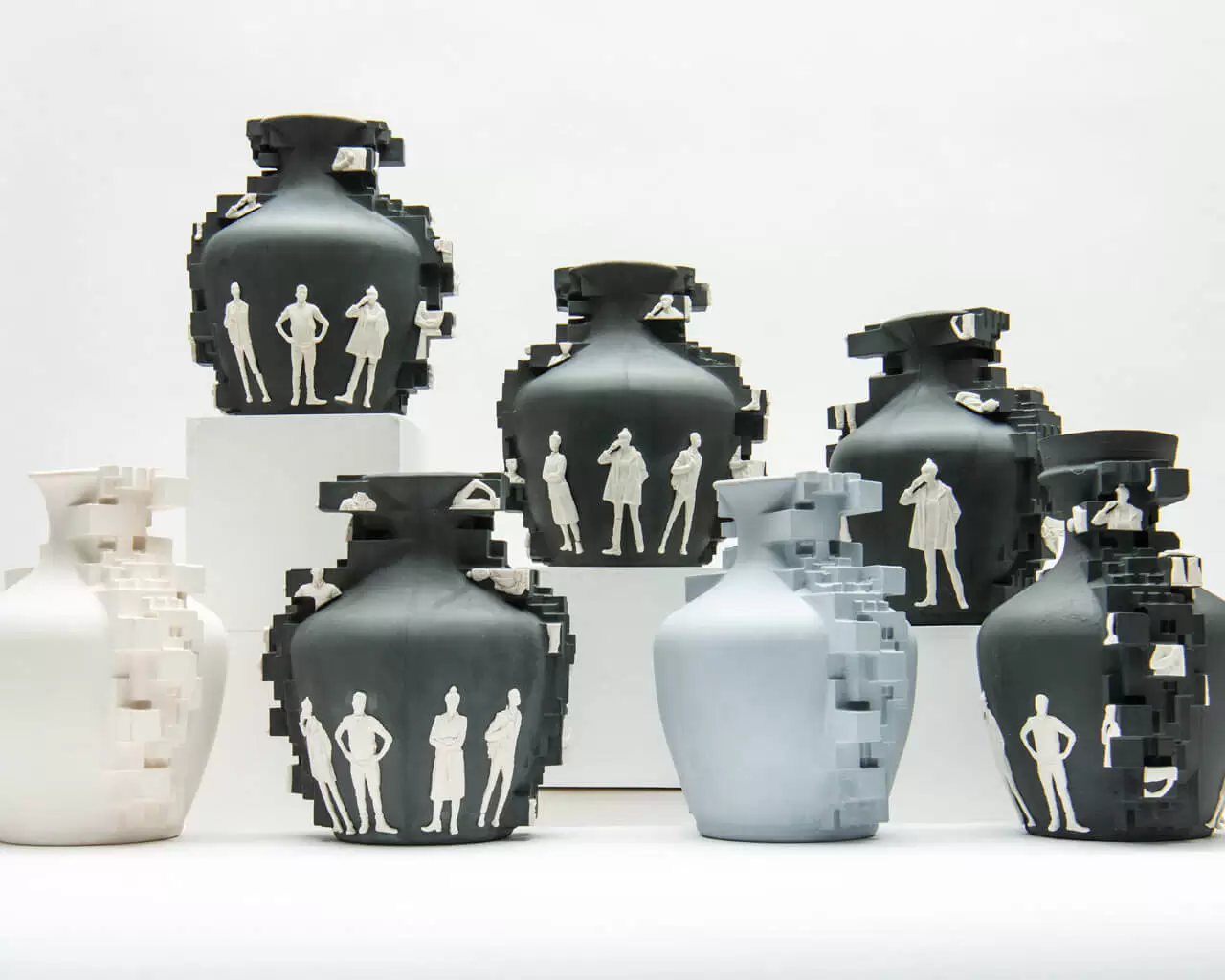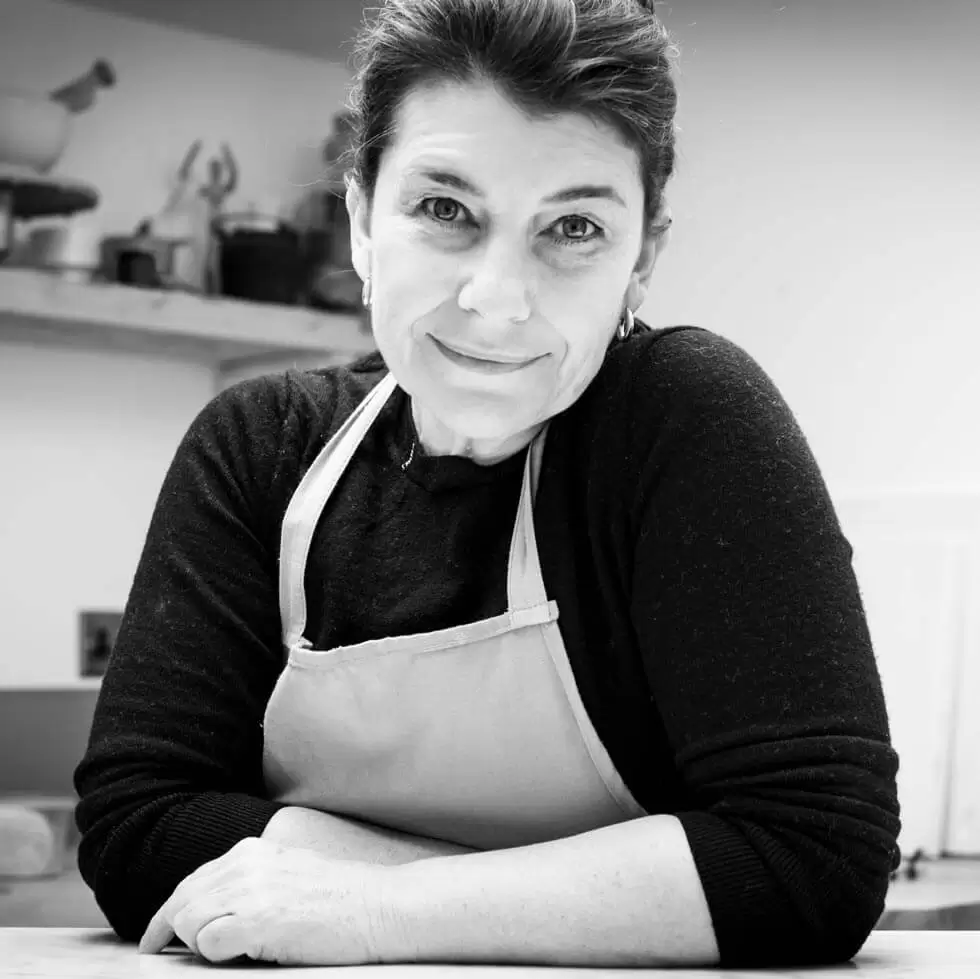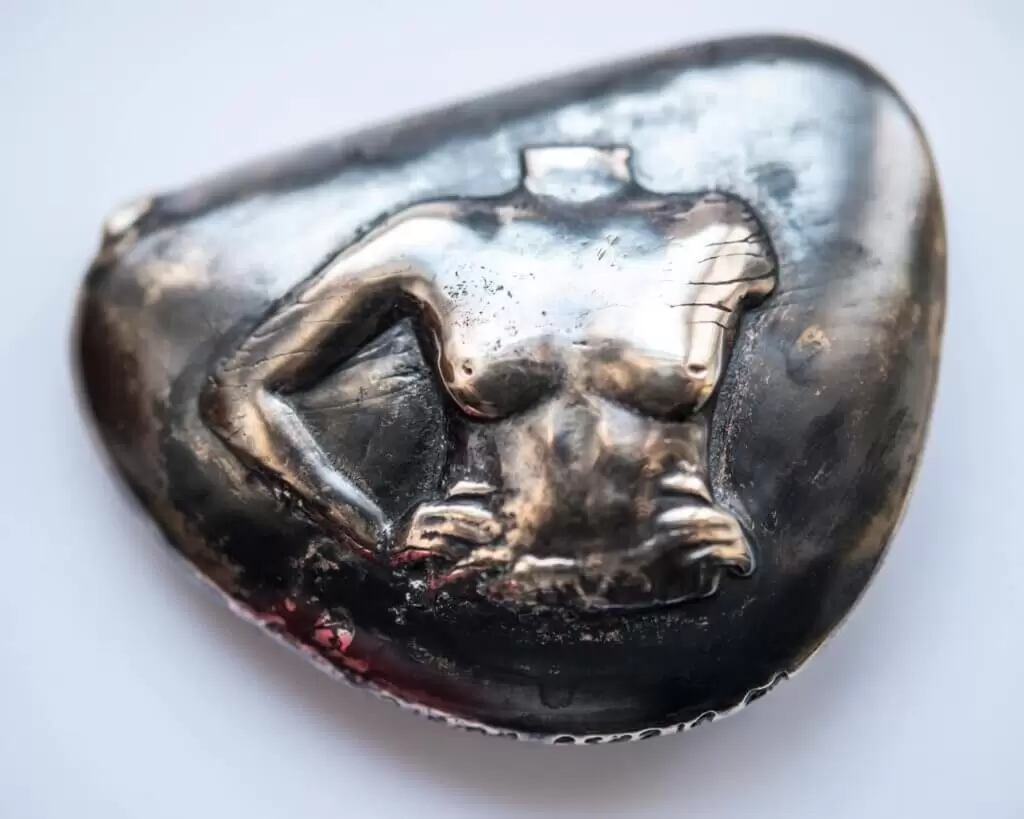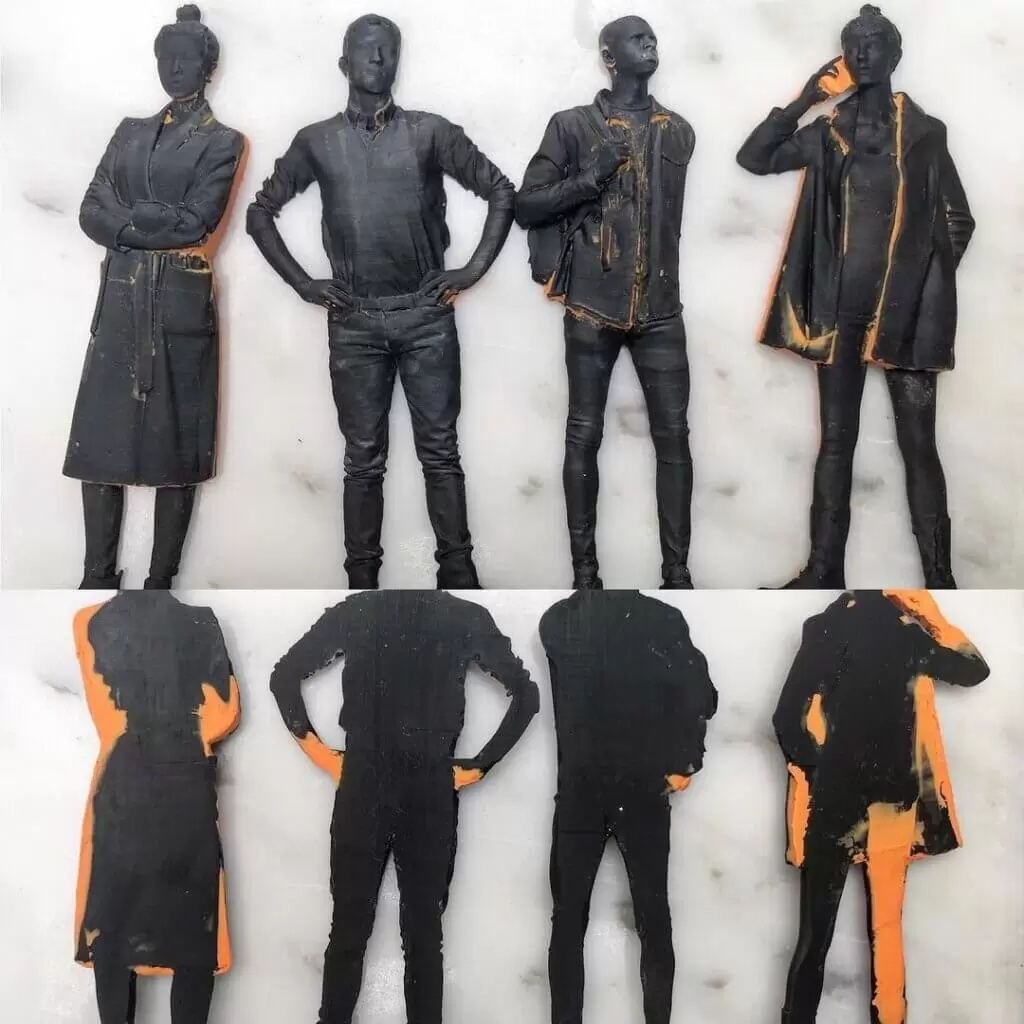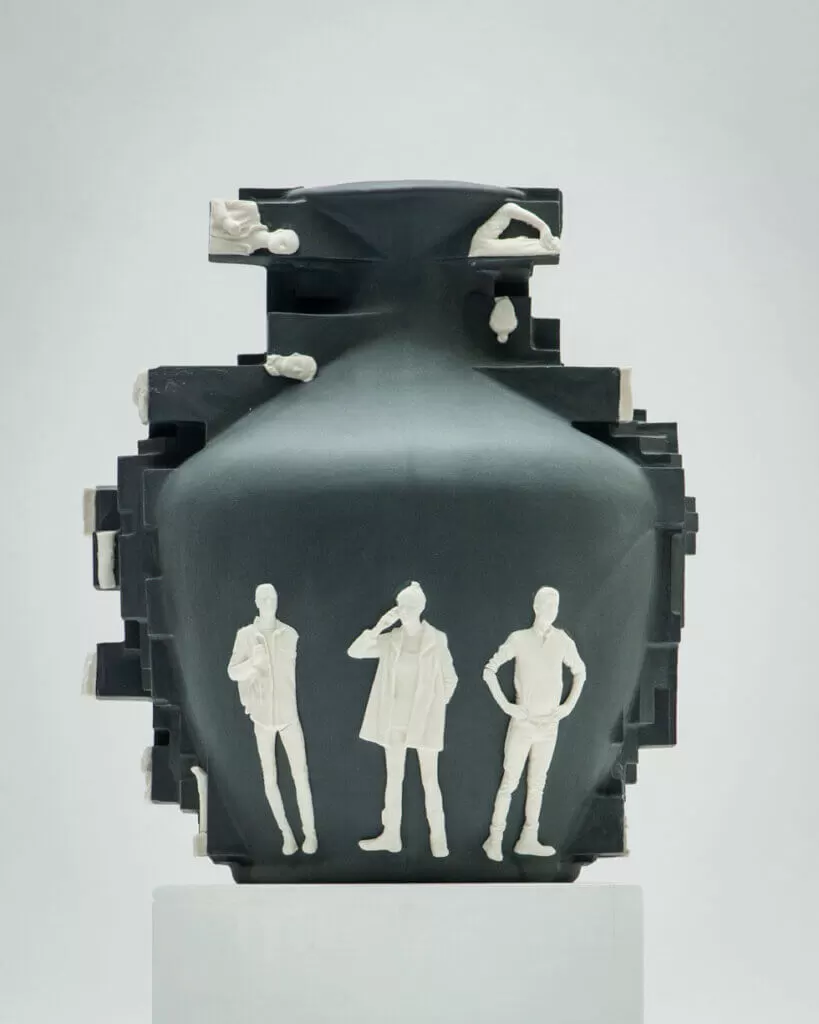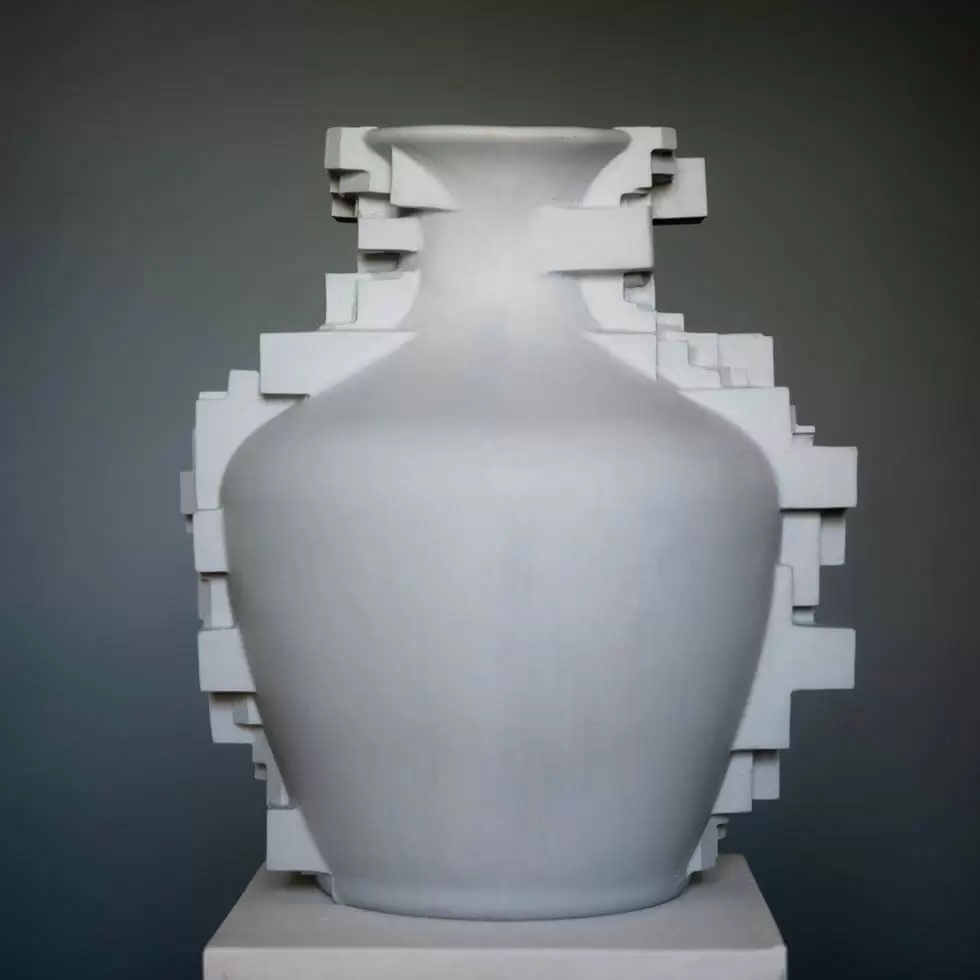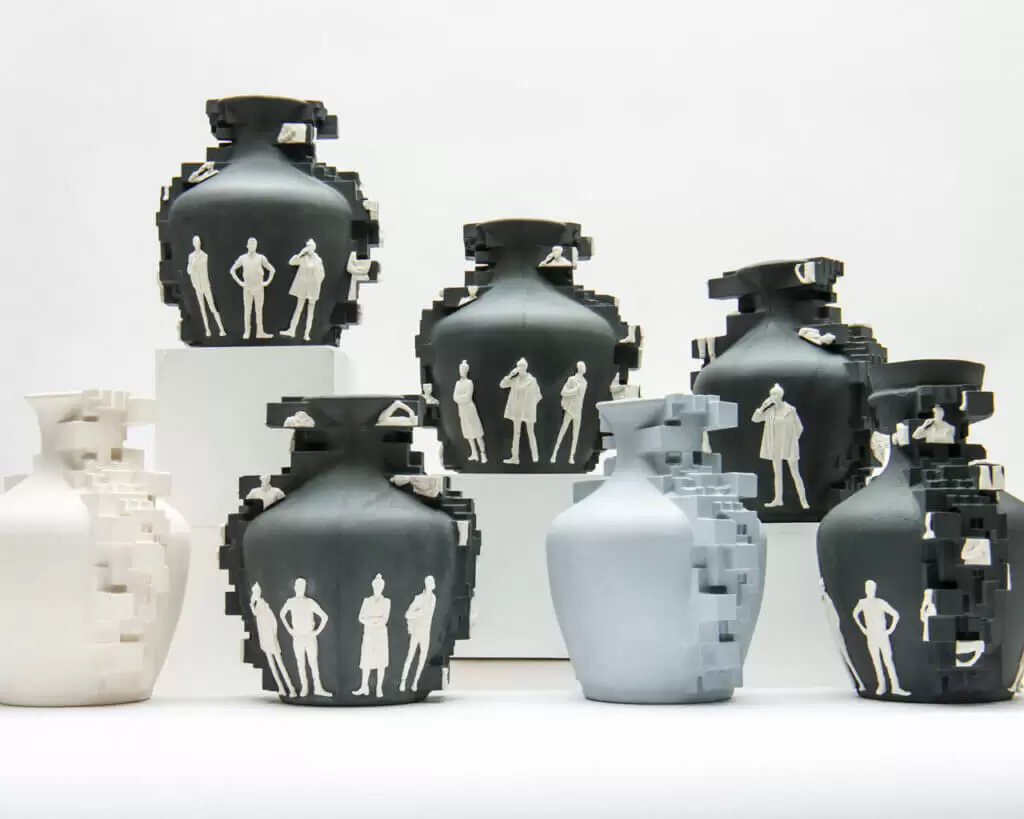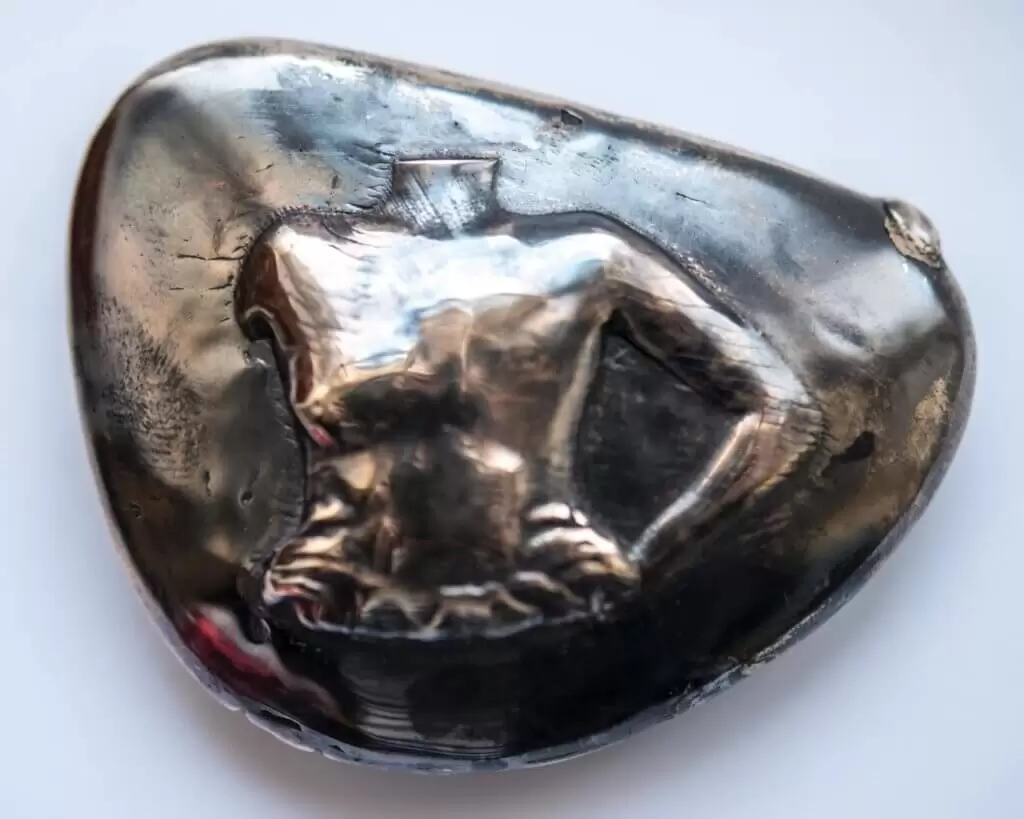Devon-based emerging ceramic artist Lorna Yabsley is a multi-discipline creative whos work explores iconic themes utilising clay to challenge the viewer’s perception.
Lorna’s work is formed from careful research, innovation and focused on the slip-casting method. Influenced by her acute observation from her years as a photographer, Yabsley is fascinated with figuration.
In her latest project Glitch pots, motivated by Wedgwood’s Jasperware, sees Yabsley
investigating the ceramic process’s technical constraints by merging digital and traditional craft techniques. Reimagining Wedgwood’s classic with an exquisite glitch appearance.
Her work has gained much notoriety, consequently winning her Second Grand Prize in the British Arts Medal Society Student Medal Project in 2019 for Her piece ‘be breast aware’, which embraced traditional materials and technical methodologies.
Graduating from Plymouth College of Art and noted as one to watch as part of Plymouth College of Art’s Class of 2020. Yabsley continues to explore her craft as she aims to evolve profoundly refined works for the high-end art market.
Q: First things first, why do you do what you do?
Lorna Yabsley: I have always been a creative and come from an arts background. I am 56 years old have been a photographer for all my working life, ceramics is a relatively new avenue for me. I love clay, and all the stages of working it, but I have always been a maker.
Q: What is your inspiration?
Lorna Yabsley: It comes and goes in fits and starts, it’s horrible when it dries up and you get blocked, and incredible when the ideas just flow, you do need to be a bit unhinged to follow a creative path. But nature, culture and politics feed my imagination, and imagery of any genre will often spark an idea.
Q: What is your creative process when you’re creating?
Lorna Yabsley: I write notes and often lie awake thinking about an idea, I need to learn to develop my sketch book in a more constructive way, as often, I will just launch into the making and work it out as I go along, and that is not always the best approach and can lead to disappointment if things don’t work out.
Q: Which is your preferred surface for working on?
Lorna Yabsley: Not sure what you mean by this, as clay is clay, but with ceramics and hand building, the quality of the tools and the handling of them is key. Much of my work to date has been digital, designed in Cad and 3D printed or positive models cut on a CNC machine, from where the traditional ceramic process takes over. This is a very time consuming way of making, but gives you an outcome that would not be possible by any other means.
Q: What would you say is an integral part of the work of an Artist?
Lorna Yabsley: Innate aesthetic judgement, the ability to work extremely hard for little or no reward or recognition and never giving up, and strive to find your find your groove and develop your own voice, I have certainly achieved that in my professional photography business, but am still developing this as an artist and maker.
Q: What artist inspires you the most?
Lorna Yabsley: That’s an impossible question, as there are so many art forms that I am drawn to, but I think dance and music is the purest artistic expression; I would love to paint and am in awe of the great names in painting; Photography also holds many master artist, Henri Cartier Bresson is one of my favourites. I am often drawn to the figurative and I like work that has a narrative, but then I am equally, blown away by a Jackson Pollock or a Corbusier building.
Q: What is the reason behind the re-interpretation of established iconic themes in your work?
Lorna Yabsley: In the west, we are so bombarded with content and I think as a society we are overwhelmed, art can cut through the noise, and I think there is power in offering up something familiar in a new light, it trips you into re-evaluating and considering things from a different perspective, and that is exciting, and if the work can challenge and provoke questions, and have an effect above and beyond the aesthetic, then it’s more than just a pretty pot, and I am not sure if the world needs any more pretty pots.
Q: How do you know when a piece is finished?
Lorna Yabsley: When I am happy with it, and to date that hasn’t happened with my ceramic work, and I spend an inordinate amount of time re-working everything, but I am getting better at it. It’s the same with photography, you only take a handful of really, meaningful and perfectly executed images in any given year, these are the ones that remain in your portfolio and stand the test of time.
Q: What is your favourite piece from your collection?
Lorna Yabsley: I have made three significant bodies of work during my degree, 1. An arts medal, for the British Arts Medal Society, about breast cancer awareness, this is where I started to play with 3D scanning and 2. The Down and Out Daybed, which was a replica of an antique daybed, made from cardboard, a comment on the appalling homeless situation. 3 The Jasperware project. I am proud of them all, but they are very much exploratory works, so I guess my favourite is yet to be made.
Q: How did you feel when you did your first solo exhibition?
Lorna Yabsley: I haven’t had a solo exhibition, but have been invited to take part in the ‘Future Edit’ graduate group show with The Crafts Council, which is a real honour.
Q: What is the most rewarding thing for you about being a part of the Art Industry?
Lorna Yabsley: Being able to indulge my creative drive, it’s not a choice but a necessity, if I am not being creative then my health suffers. It’s a tough industry and not an easy route to take. Its infuriating that the arts is under threat and under-funded, as a nation we lead in the creative industry and it needs a total re-evaluation from the top, it’s so short sighted to not recognize it and promote it as a growth industry and a positive force for well-being and health.
Q: Is there anything that worries you about how social media is affecting the promotion of artists?
Lorna Yabsley: Social media has democratised the market place and that’s a good thing for all creatives, hobbyist etc, if it promotes creativity, which can be so rewarding and beneficial for humanity, then it’s a good thing. The sheer volume of content though is a hindrance, and it’s hard to be heard above the noise.
Q: In your opinion, do you have any advice for artists on how to manage their social media image? Or does it even need managing?
Lorna Yabsley: It needs managing, marketing yourself should occupy 50% of your time, if you want to be commercially successful. To do it well, is a job, in itself. Trends change all the time, and it’s hard to keep up with it. Above all though, good quality photography is vital, and the smart phone has democratised that even further.
I love the idea of not having to promote myself at all, it worked well for Banksy! I do believe that if the work is outstanding then it finds an audience. I often think I would like an alter ego, as it is easy to get type cast as one thing or type of artist, it’s hard to promote yourself effectively when you do a lot of different things and your profile is varied.
Q: Are there any places where you feel Art and Technology really shouldn’t overlap?
Lorna Yabsley: No way, technology and those that are great with it are artists just the same, I had a lot of help from digital technicians at college, and the level of craft and skills employed in what they do, should never be underestimated or devalued as anything other than the art form it is.
https://www.instagram.com/lornayabsley/
©2021 Lorna Yabsley


